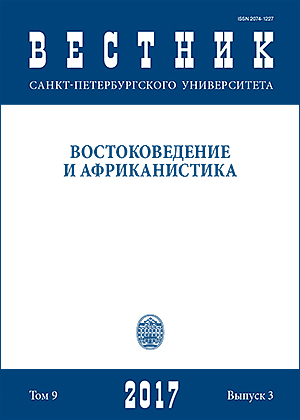First account of a birthday in human history
DOI:
https://doi.org/10.21638/11701/spbu13.2017.305Abstract
The article deals with the five Old Sumerian cuneiform texts from the city of Lagash made during the time of Lugalanda (24th century BC). Every text contains the list of offerings made in the temple of the goddess Bau on the occasion of the birth of children in the king’s family. It is established that there is the first mentioning of holiday on the occasion of people’s birthday in the history of writing. The hypothesis of dating of the text of DP 218 by time of an autumn equinox is offered. The author assumes that need to celebrate birthdays is connected with submission of economy of the temple of Bau to the king’s family and with emergence of a sacral genealogy of the king Lugalanda.
The article also contains information about birthdays from the sources of the Middle East and antiquity known to scholars since the 5th century BC. It is noted that birthdays are celebrated only in those societies where the growth of private property and the increase of egocentrism contribute to an interest in the individual destiny of a person. And vice versa, the predominance of the community neutralizes the facts of the individual’s life.
Keywords:
Sumer, Lagash, Lugalanda, Baranamtara, birthday
Downloads
References
Downloads
Published
How to Cite
Issue
Section
License
Articles of "Vestnik of Saint Petersburg University. Asian and African Studies" are open access distributed under the terms of the License Agreement with Saint Petersburg State University, which permits to the authors unrestricted distribution and self-archiving free of charge.





